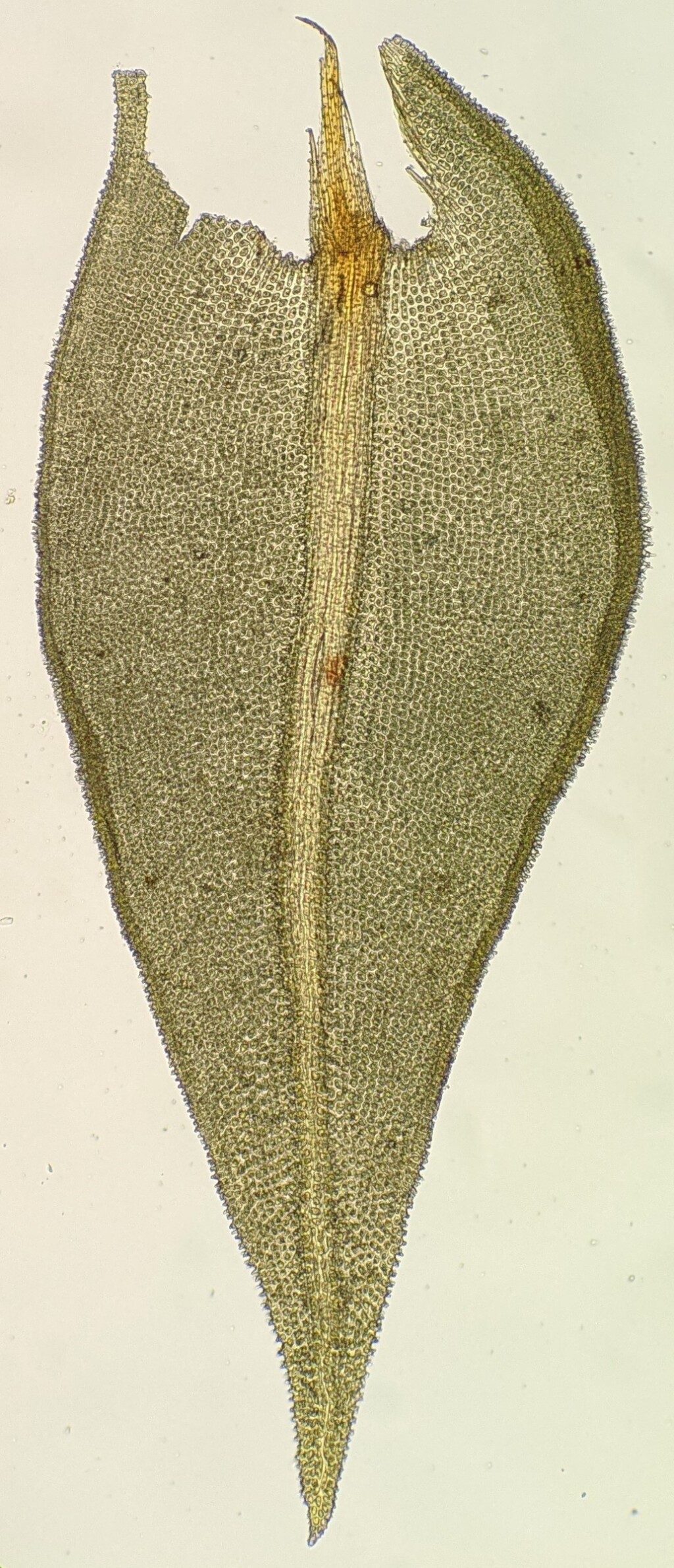Triquetrella
Dioicous. Asexual reproduction by axillary clusters of leaf-like gemmae. Mats or tufts on soil or rocks. Stem occasionally branching, triangular in cross-section, with sparse rhizoids near base; central strand absent or rarely present (not in Victoria); sclerodermis present; hyalodermis absent. Leaves triangular or lanceolate to ovate-triangular, wide-spreading to squarrose when moist, appressed, with incurved apices or sometimes contorted when dry, arranged in three rows that often spiral around stem, broadly decurrent; apex acute or acuminate, without a hairpoint; costa subpercurrent, percurrent or excurrent, with elongate adaxial superficial cells, without a differentiated adaxial epidermis, with or without an adaxial stereid band, without a hydroid strand, with an abaxial stereid band, with a weakly differentiated abaxial epidermis, with elongate or rhombic-quadrate abaxial superficial cells; margin entire, recurved away from apex, without a border; laminal cells rounded rhombic, hexagonal or quadrate, rectangular at insertion or throughout base, unipapillose of bipapillose with simple or bifid spiculose papillae, or rarely pluripapillose with dome-shaped papillae, with an orange or yellow-orange KOH reaction. Acrocarpous or cladocarpous. Capsule erect, straight, ellipsoid to cylindric, exserted, operculate, with an annulus. Calyptra cucullate. Operculum conic or rostrate. Peristome of 16 teeth, usually split to base or occasionally perforate.
In dry Mediterranean climates of Spain, South Africa, California, southern South America, Australia and New Zealand, with seven species (Hedderson & Zander 2007); two species in Victoria.
The Victorian Triquetrella paradoxum (I.G.Stone & G.A.M.Scott) Hedd. & R.H.Zander was transferred from Lepodontium based on its closer relatedness to Triquetrella according to phylogenetic analyses of a combined dataset of nuclear and chloroplast DNA sequences (Hedderson & Zander 2007). The entire leaf margins and differentiated abaxial epidermis of the costa that occur in T. paradoxum is anomalous in Leptodontium but not in Triquetrella (Zander 1993; Hedderson & Zander 2007).
Triquetrella tasmanica (Broth.) Granzow is tentatively recognised in Anomodon (see Anomodontaceae profile).
 Spinning
SpinningHedderson, T.A.; Zander, R.H. (2007). Triquetrella mxinwana, a new moss species from South Africa, with a phylogenetic and biogeographic hypothesis for the genus. Journal of Bryology 29: 151–160.
Zander, R.H. (1993). Genera of the Pottiaceae: Mosses of harsh environments. Bulletin of the Buffalo Society of Natural Sciences 32: 1–378.

